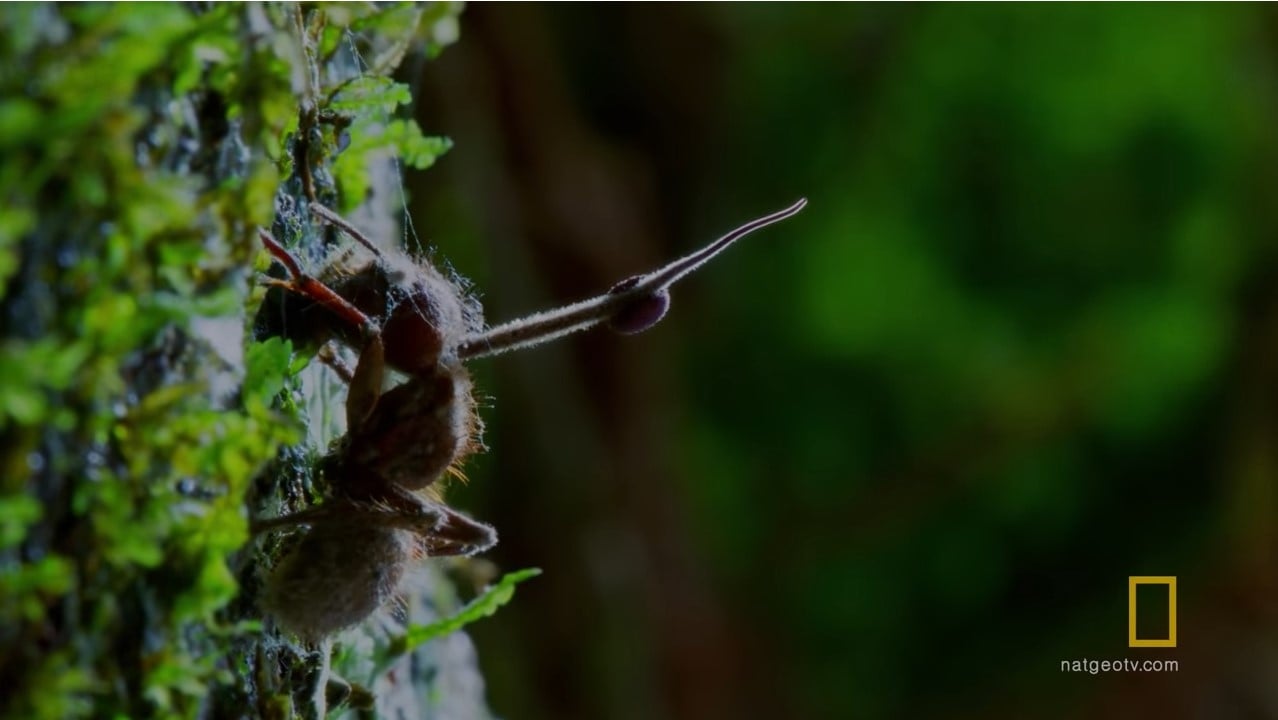Since zombies are a product of Hollywood, books and other pop culture, no one would expect that such behavior would be possible in the real world. However, a team of scientists observed zombie-like behavior in ants caused by a deadly fungus.
Scientists found that carpenter ants (Campnotus castenus) change their behavior after being infected by a certain type of deadly fungus known as Ophiocordyceps unilateralis sensu lato. Once affected, the ants can’t resist the power of the fungus. The zombie-like behavior in the ants causes them to “march to a high point” until the infection causes them to clamp their mandibles (jaws) into a leaf vein or twig, committing suicide.
According to study author Colleen Mangold from Pennsylvania State University, the deadly fungus doesn’t attack the brain directly to cause the zombie-like behavior in ants, yet somehow they lose their free will. To learn how the fungus attacks the ants’ jaws, Mangold and PI David Hughes observed the muscle by breaking open the membrane that covers the muscle fibers. Their findings were published in the Journal of Experimental Biology.
“The most difficult aspect of the study was the infections,” Mangold said in a statement, adding that the fungus can’t successfully infect ant nests but attacks lonely, free-roaming ants instead.
This special type of deadly fungus was only seen thriving in the humid areas of Brazil or South Carolina. That’s why the team recreated the humid environment of these areas in their own lab. This enabled them to collect infectious spores from infected ants. The researchers also had to stop the advancement of the fungus before it caused suicidal behavior in ants by causing them to lock their jaws on foliage.
After preserving the necessary jaw muscles, scientists looked at their structure on an electron microscopes. The fungus filaments had already entered the muscle but didn’t affect the nerves or nervous systems. According to the team, it looked as if the fungus forcefully caused the muscles to contract, damaging the muscle fibers which slide against each other to cause the muscles to contract.
Upon close examination, scientists found small bead structures on the fungus filaments. Scientists believe this is a result of trying to fight the infection that caused the zombie-like behavior in the ants. Nevertheless, Mangold said further research needs to be conducted to learn more about the deadly fungus that cause suicidal and zombie-like behavior in these tiny insects.
“The next steps we want to take include isolating those vesicles and determining whether they are coming from the fungus or the host,” she said.
This is not the first deadly pathogen of this kind. Earlier this year, a group of scientists studied a deadly pathogen that attacks frogs and could be responsible for the next mass extinction. You may also want to check out the top 10 deadliest viruses in the world.





